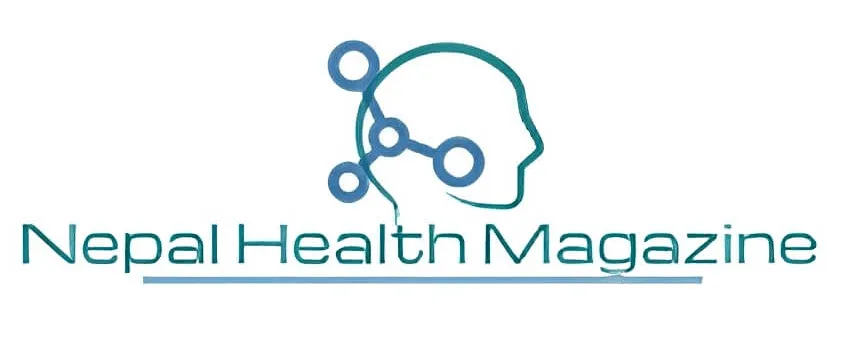Nepal Climate Risk Country Profile has been launched synthesizes climate characteristics and projections, vulnerability to natural hazards, sectoral climate change impacts, and adaptation priorities in Nepal. Climate change is a major risk to good development outcomes, and the World Bank Group is committed to playing an important role in helping countries integrate climate action into their core development agendas. The World Bank Group (WBG) and the Asian Development Bank (ADB) are committed to supporting client countries to invest in and build a low-carbon, climate-resilient future, helping them to be better prepared to adapt to current and future climate impacts. Both institutions are investing in incorporating and systematically managing climate risks in development operations through their individual corporate commitments.
For the World Bank Group: a key aspect of the World Bank Group’s Action Plan on Adaptation and Resilience (2019) is to help countries shift from addressing adaptation as an incremental cost and isolated investment to systematically incorporating climate risks and opportunities at every phase of policy planning, investment design, implementation and evaluation of development outcomes. For all International Development Association and International Bank for Reconstruction and Development operations, climate and disaster risk screening is one of the mandatory corporate climate commitments. This is supported by the World Bank Group’s Climate and Disaster Risk Screening Tool which enables all Bank staff to assess short- and long-term climate and disaster risks in operations and national or sectoral planning processes. This screening tool draws up-to-date and relevant information from the World Bank’s Climate Change Knowledge Portal, a comprehensive online ‘one stop shop’ for global, regional, and country data related to climate change and development.
For the Asian Development Bank: its Strategy 2030 identified “tackling climate change, building climate and disaster resilience, and enhancing environmental sustainability” as one of its seven operational priorities. Its Climate Change Operational Framework 2017–2030 identified mainstreaming climate considerations into corporate strategies and policies, sector and thematic operational plans, country programming, and project design, implementation, monitoring, and evaluation of climate change considerations as the foremost institutional measure to deliver its commitments under Strategy 2030. ADB’s climate risk management framework requires all projects to undergo climate risk screening at the concept stage and full climate risk and adaptation assessments for projects with medium to high risk.
Recognizing the value of consistent, easy-to-use technical resources for our common client countries as well as to support respective internal climate risk assessment and adaptation planning processes, the World Bank Group’s Climate Change Group and ADB’s Sustainable Development and Climate Change Department have worked together to develop this content. Standardizing and pooling expertise facilitates each institution in conducting initial assessments of climate risks and opportunities across sectors within a country, within institutional portfolios across regions, and acts as a global resource for development practitioners.
Highlights of Nepal Climate Risk Country Profile
- Warming in Nepal is projected to be higher than the global average. By the 2080s, Nepal is projected to warm by 1.2°C–4.2°C, under the highest emission scenario, RCP8.5, as compared to the baseline period 1986–2005. The range in possible temperature rises highlights the significantly lower rates of warming expected on lower 21st century emissions pathways.
- Rises in maximum and minimum temperatures are expected to be stronger than the rise in average temperature, likely amplifying the pressure on human health, livelihoods, and ecosystems. Temperature increase is expected to be strongest during the winter months.
- Climate change is already having significant impacts on the environment in Nepal, species’ ranges are shifting to higher altitudes, glaciers are melting, and the frequency of precipitation extremes is increasing.
- Natural hazards such as drought, heatwave, river flooding, and glacial lake outburst flooding are all projected to intensify over the 21st century, potentially exacerbating disaster risk levels and putting human life at risk.
- Modelling has suggested that the number of people annually affected by river flooding could more than double by 2030 as a result of climate change. At the same time the economic impact of river flooding could triple.
- The vulnerability of Nepal’s communities, particularly those living in poverty, in remote areas, and operating subsistence agriculture, increases the risk posed by climate change.
- Some important adaptation approaches, such as air conditioning, irrigation, water storage and new crop varieties, may be inaccessible to these communities, and even with adaptation they are likely to experience damage and loss. Without support to the poorest in Nepalese society inequalities are likely to widen.
Key indicators of Nepal Climate Risk Country Profile



- Webinar on World Hand Hygiene | Register today
- World’s First 5-in-1 vaccine against meningitis | Men5CV
- World Health Worker Week 2024 | Know theme
- World Autism Awareness Day 2024 | Know theme
- Staff Nurse | OCH | latest jobs vacancy 2024
- World Hepatitis Summit 2024 | WHO
- Staff Nurse | TLMN | ngo jobs 2024
- World Health Day 2024 | Know theme
- Measuring access to assistive technology in Nepal | Country Report
- Migration Health Nurse | IOM | ingo jobs
- Nursing Officer | Kopila Valley | nursing jobs 2024
- Benefits and risks of using artificial intelligence for pharmaceutical development and delivery | WHO
bachelor jobs bph jobs covid19 health health for all health guidelines new health jobs healthjobs healthjobs in nepal health jobs vacancy health public health update ingo jobs jobs after passing bachelor jobs for bph jobs in nepal jobs in ngo ngo jobs ngo jobs vacancy ngo jobs vacancy for bph ngo job vacancy 2021 nurse jobs nurse jobs 2021 nurse vacancy nursing insurance nursing job nursing jobs nursing jobs 2021 nursing jobs in nepal nursing law nursing officer Nursing Vacancy Public health Public health concern public health important days Public health in Nepal publichealth jobs public health updated Staff Nurse Staff Nurse and HA Vacancy | Nepal Army 2021 staff nurse vacancy staff nurse vacancy in ngo 2021 nepal staff nurse vacancy kathmandu who guidelines WHO official
bachelor jobs bph jobs covid19 health health for all health guidelines new health jobs healthjobs healthjobs in nepal health jobs vacancy health public health update ingo jobs jobs after passing bachelor jobs for bph jobs in nepal jobs in ngo ngo jobs ngo jobs vacancy ngo jobs vacancy for bph ngo job vacancy 2021 nurse jobs nurse jobs 2021 nurse vacancy nursing insurance nursing job nursing jobs nursing jobs 2021 nursing jobs in nepal nursing law nursing officer Nursing Vacancy Public health Public health concern public health important days Public health in Nepal publichealth jobs public health updated Staff Nurse Staff Nurse and HA Vacancy | Nepal Army 2021 staff nurse vacancy staff nurse vacancy in ngo 2021 nepal staff nurse vacancy kathmandu who guidelines WHO official

Hey there, I am Nirdesh Baral, founder of Nepal Health Magazine. I am a Tech geek by passion , Public health practitioner by profession and an Ailurophile by heart and a patriot by birth



